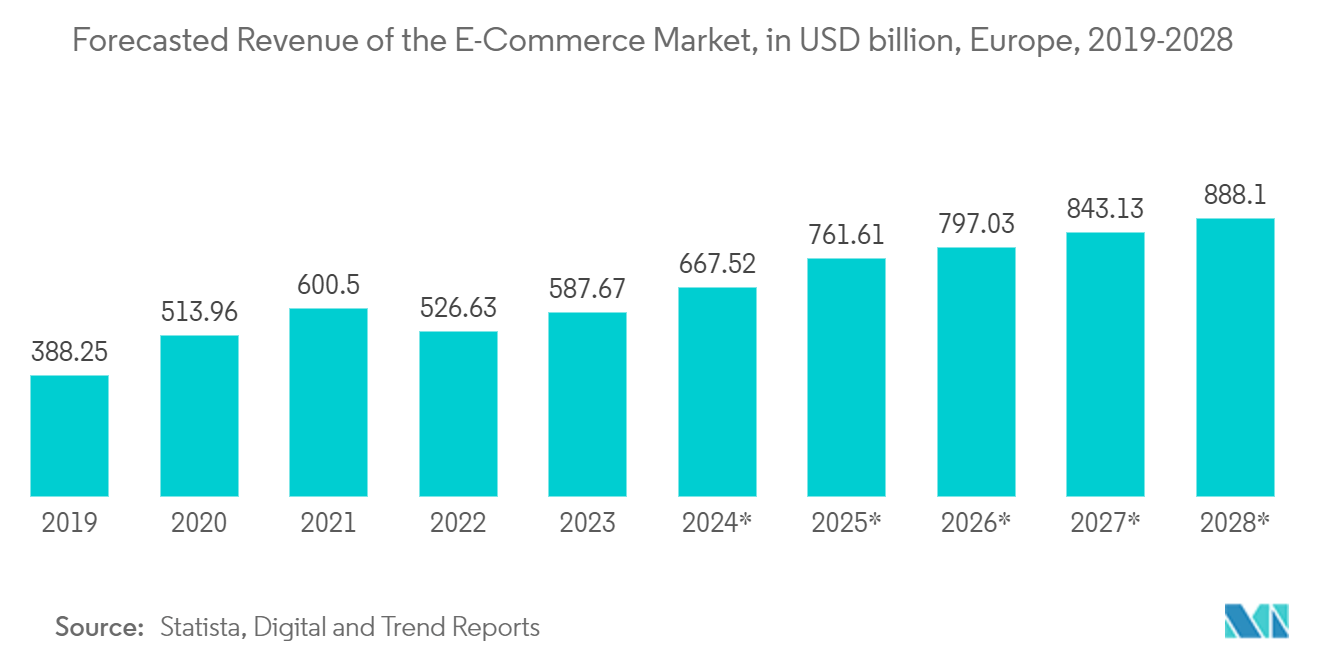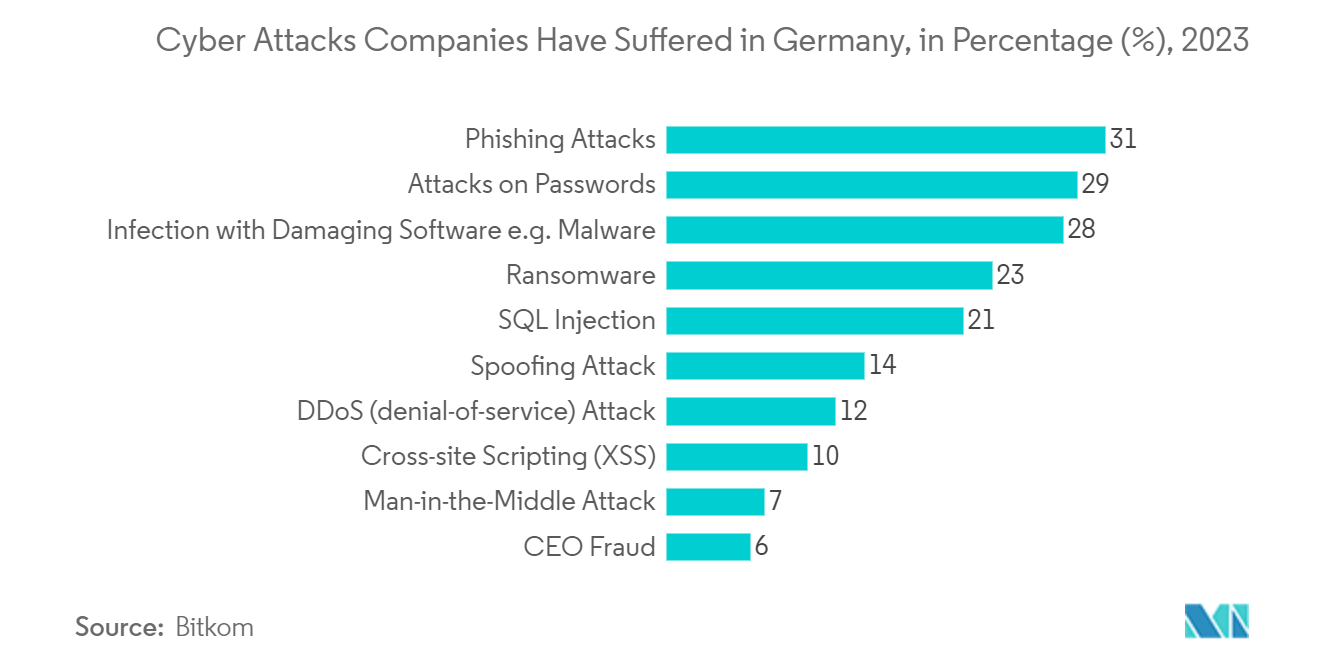Market Trends of Europe SOCaaS Industry
Retail and Consumer Goods to be the Fastest Growing End-user Industry
- Online shopping continues to gain a significant market share across Central Europe. The E-commerce market is expected to generate over USD 880 billion by 2028. Unlike the Western European markets, where the online market witnessed a decline in market share in 2022, the boom in Central Europe shows no signs of subsiding. Online grocery shopping leads the region in online market penetration. Driven by the paramount importance of price, Central European consumers often optimize purchases across channels. Due to tight household budgets, consumers increasingly compare prices and promotions among online retailers, thereby increasing online shopping in the region.
- The segment is estimated to grow at a significant rate in Europe during the forecast period. Retail continues to be the economic sector with the highest sales in Austria. Austrians primarily use the retailer's online service to do their shopping conveniently and digitally.
- In November 2023, Woolworth GmbH, a German retail company, announced more than 30 new store openings in Austria by the end of 2024, offering 10,000 items for customers. This increases the demand for SOCaaS to manage risks. Amazon Web Services, Inc., the world's largest online retailer, offers SOC in the cloud using AWS security services to customers in Europe. The company offers its AWS Security Hub for businesses to deploy in different SOC operating models. SOC teams can use AWS Security Hub to perform security best practice checks and aggregate alerts.
- With the rise of online shopping, retailers are facing complex challenges when protecting their consumer and business data from cyber threats. Cloud adoption and the growth of e-commerce have increased digital transformation in retail. Growing security risks have increased the demand for SOCaaS to proactively detect, disrupt, and remediate cyber threats before they impact the retail supply chains. It offers 24/7 threat-hunting services, including Managed Detection and Response (MDR), to retail companies to detect malicious activity, stop breaches, simplify security, and minimize their business risk.
- According to a Sophos report, the State of Ransomware in Retail 2022, there is a growing trend of threats targeting the retail sector, with 77% of retailers experiencing a ransomware attack. The European Union has updated its Network and Information Security (NIS) regulation to NIS2 to mitigate the risks of cyber threats across the retail industries. This EU-wide initiative promotes building better threat detection and response structures across retail and other sectors. From mid-2024, food producers, distributors, and supermarket chains are required to take security measures as per the requirements of the NIS2 directive.
- Therefore, vendors in the European retail sector are embracing market adoption to detect and respond to malware, ransomware, and phishing attacks quickly. More and more organizations outsource their SOCs to a third-party cybersecurity company. By utilizing SOCaaS, SMEs may experience many worthwhile benefits, such as expertise, without the upfront and operational costs. This is anticipated to boost the market's growth.

Germany is Expected to Hold Significant Market Share
- Cybersecurity plays a crucial role in the security operations center landscape in the German portion of the European security operations center (SOC) as a service market. Germany, one of Europe’s strongest economies, is committed to improving digital security and safeguarding private data by implementing SOC services. According to Sophos, 58 percent of organizations in Germany experienced ransomware attacks in 2023.
- Germany has particular network security challenges because it is a hub for many different businesses. The foundation of the German economy, the manufacturing sector, is especially open to cyber attacks. Industry 4.0, which refers to the increased interconnectedness of industrial systems, raises concerns about the possible impact of cyber attacks on critical infrastructure.
- For instance, in September 2023, according to the German Digital Association, Bitkom Germany lost EUR 206 billion (USD 224 billion) due to IT equipment and data theft and industrial and digital espionage and sabotage. This will be the third year that the damage has exceeded EUR 200 billion (USD 215.46 billion).
- A new attack has surfaced due to the increased interconnectedness of Internet of Things (IoT) devices and smart cities. To safeguard sensitive data and vital infrastructure in urban settings, SOC services are developing to secure these growing attack vectors.
- For instance, in November 2023, the Office for Information Security (BSI) in Germany gave a report on cybersecurity and IT in the nation. According to the analysis, the threat level is “higher than ever before,” with an average daily growth in malware types of 332,000 throughout the analyzed period, setting a record for the country.
- Emerging technology, local challenges against cyber attacks, workforce development, and a dedication to ongoing innovation are all driving significant changes in the German country of the European Security Operations Center (SOC) as a service market.


